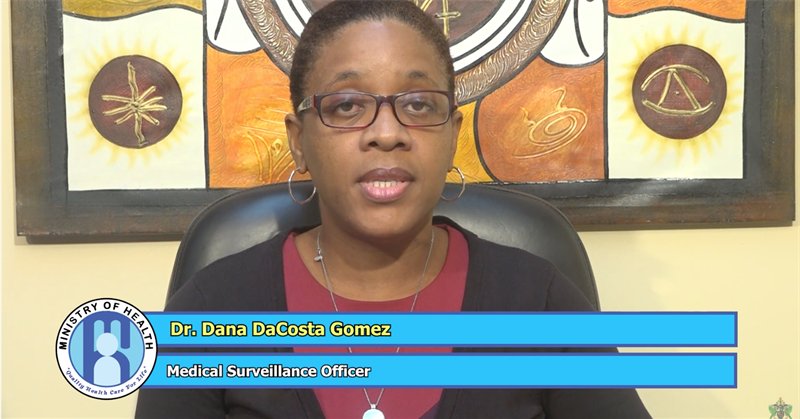THE MINISTRY OF HEALTH HAS RECORDED AN INCREASE IN THE NUMBER OF CASES.
 Over the past two months an increase in the number of cases of Hand, Foot and Mouth Disease has been recorded. Based on the analysis of data received from the health care facilities this trend was observed throughout the month of August with increases in September. It is not unusual to experience cases of hand, foot and mouth disease at this time of the year as studies show the correlation between increased incidence of this disease and heavy rainfall.
Over the past two months an increase in the number of cases of Hand, Foot and Mouth Disease has been recorded. Based on the analysis of data received from the health care facilities this trend was observed throughout the month of August with increases in September. It is not unusual to experience cases of hand, foot and mouth disease at this time of the year as studies show the correlation between increased incidence of this disease and heavy rainfall.
Hand, Foot and Mouth Disease is a contagious viral illness commonly seen in young children. It affects mainly children within the age groups of 0 to 5 years but can also affect older children and adults. The virus is spread from an infected person through their
Nose and throat secretions, such as saliva, drool, or nasal mucus
Fluid from blisters or scabs
Feces (poop)
Respiratory droplets when they cough or sneeze
Symptoms associated with hand, foot and mouth disease include
Fever for 3 to 5 days
Sore throat
Decreased appetite and general unwell feeling
Loose stools
Skin rash which normally appears on the palms of the hands and fingers, soles of the feet and toes, upper buttocks and around the mouth. In some instances, the rash may only appear on the arms and legs.
Hand, foot and mouth disease is not a serious illness, it is usually mild and self-limited but in certain instances the blisters in the mouth can lead to dehydration and hospitalization of the infected child. The disease normally resolves within 7 to 10 days. The disease is very contagious given its mode of transmission and the age group affected and can often lead to outbreaks within the educational settings.
To prevent the spread of the disease the importance of proper infection prevention and control measures must be emphasized:
Thorough washing of the hands with soap and water after using the toilet, before eating, after wiping noses, and after changing nappies or soiled clothing.
Avoid sharing cups, eating utensils, items of personal hygiene (for example: towels, washers and toothbrushes), and clothing (especially shoes and socks).
Thoroughly wash with soap and water any soiled clothing or contaminated surfaces and toys. Additional disinfection of toys and surfaces with a diluted chlorinated solution should be practiced.
Teach the children about practicing cough and sneeze etiquette:
o Cover their coughs and sneezes with their elbow or tissue
o Dispose of used tissues in the bin
o And practice handwashing with soap and water afterwards
Educators observe and be vigilant of any child presenting with signs and symptoms of hand, foot and mouth disease. Parents, keep your sick children at home and away from other children. The sick child should not return to school until all the skin lesions have healed usually within 7 to 10 days.
Hand, foot and mouth disease can be caused by many viruses, therefore a child can become infected more than once. It is of paramount importance that we, parents and educators, remain vigilant to allow the timely detection of new cases and institute the proper infection prevention and control measures to prevent further spread of this disease.
Let us continue to work together to ensure minimal disruptions in the school term and provide that safe environment our children need to thrive.
The Ministry of Health, Wellness and Elderly Affairs thanks you for your continued support as we continue to keep Saint Lucia healthy and safe.